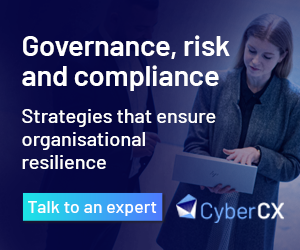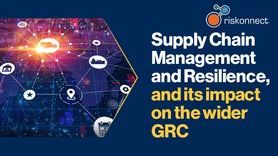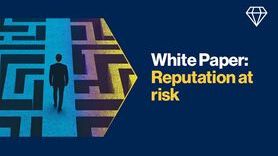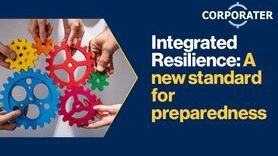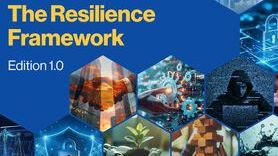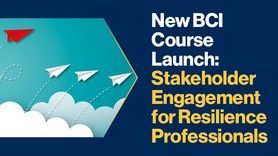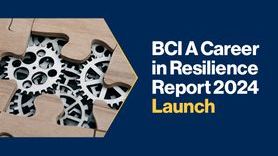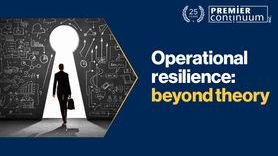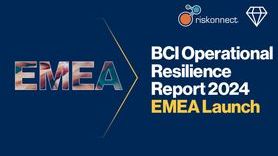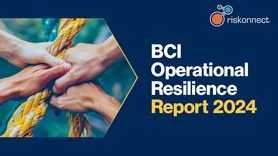Top Continuity Threats Businesses Will Face in 2022, and what businesses can do to improve their chance of surviving

A simple look at the state of business continuity suggests not enough firms are prepared for the challenges to their economic survival and resilience. According to the latest PWC Global Crisis Survey, as many as 95 percent of business leaders report that their crisis management capabilities need improvement.[i]
And though the pandemic has spurred on business leaders seeking to build up their organizational resilience capabilities, the low level of crisis readiness (before COVID) has made that effort exceedingly difficult.
Indeed, more than 30 percent of business leaders report that they did not have a designated core crisis response team when the pandemic first struck.[ii] Only 35 percent had a crisis response plan they deemed “very relevant.”[iii]
Data also shows that organizations built up crisis management and business continuity muscle memory, thanks to the pandemic. Senior management, for one, has become more attuned to the importance of resilience, according to the Future of Business Continuity Report.[iv]
But the threat landscape has only degraded, putting late adopters at a distinct disadvantage.
What can they do? Getting staff to take business continuity and resilience seriously is one place to start. However, those abstract concepts only motivate staff if they fully understand the specific threats they face.
Many of those threats are also becoming (more) interrelated, as they unfurl in bunches, compounding the individual effects of each.
What are the key continuity threats to prepare for? We lay out the big ones, here.
COVID
For the last two years, COVID has overwhelmed everything. And to everyone’s dismay, the pandemic persists.
Sure, many countries are on the trough of the Omicron wave. Coming right behind it, though, is a new subvariant, BA.2.
What to make of it? Well, public health officials are sounding alarms. Senior officials at the World Health Organisation[v], for instance, predict that the subvariant might be more contagious than the original Omicron variant.
Whichever way it goes, businesses will likely have to prepare for severe disruptions to continue this year.
Mental health
Then, there’s the mental health crisis. Turbocharged by COVID, this crisis is leading to record levels of sickness absence and long-term work incapacity.
Employees with unresolved depression in the U.S., for instance, experience a 35 percent reduction in their productivity, according to the American Psychiatric Association.
In Australia, the Productivity Commission estimates that employees with mental illness take an annual average of 10 to 12 days off due to their psychological distress; total costs from lost productivity range from AUD 12 billion to AUD 39 billion.
Countries with large populations of mentally ill people also have significant populations of working-age people who care for them, further exacerbating availability challenges.[vi]
Supply chain
COVID-era availability challenges aren’t just about personnel, either. A global computer chip shortage – dubbed by some as a chip Armageddon – has meant persistent delays for many electronics. The items that are available are going for inflated prices, as economies experience inflation rates last seen in the early 1980s.[vii]
For businesses, there’s no respite in sight. Most experts are predicting things will get worse before they improve.
Even more concerning is the fact that government measures to ease shortages, such as running major ports around the clock, don’t seem to be working.
Cyber-attacks
Of course, overloading many of these ports are commercial products that workers need, especially staff that want remote in 2020.
Unfortunately, hackers will continue to target the security vulnerabilities that opened during the remote transition. Those vulnerabilities have led to increases in attacks on commercial networks and applications.
If anything, major infrastructure attacks are more concerning for businesses; they can knock out major utilities.
The likelihood of such a ransomware incident happening in 2022 is high. American consumers already experienced the Colonial Pipeline shut down last year. And experts expect cyber risk to persist, due to rising geopolitical tensions, increased access to cryptocurrencies and dark money, and the general instability associated with the pandemic
Natural disasters
Finally, severe weather events remain a keen risk to business continuity. Last year, for instance, saw 47-billion-dollar weather disasters, the third costliest year on record.[viii]
Before that, data from the world’s largest insurance broker identified 2017 and 2018 as the costliest back-to-back years for weather disasters on record, with over 200 billion in economic loss directly attributed to damage caused by natural disasters and extreme weather events.[ix]
Think your business can survive? Remember, half of the losses were uninsured.
Solutions and strategies to mitigate the impacts of disruptions in 2022
So, what can be done? Here, senior leadership must get their business continuity capabilities up and running and resource their business continuity management systems (BCMS).
Of course, a best-practice BCMS won’t build itself. Senior leaders still need to get their people on the same page to prepare for the key continuity threats this year.
Fortunately, senior leaders and Business Continuity managers don’t need to do it alone. Digital business continuity management software can help in the effort. These platforms enable organizations to automate their key business continuity management functions.
The aim, here, should be to find a platform that will help Business Continuity managers and executives determine disruption impacts, develop plans and recovery strategies to address risks, and scale up to any incident and back down to business as usual.
Other important capabilities include:
- Business impact analysis. Built-in BIA tools provide a step-by-step process to identify critical activities, determine maximum periods of disruption, assess the risk and impact of disruptions, collect and document recommendations, and report across the business.
- Find gaps easily. Collecting and aggregating data to highlight any critical activities, processes, assets, and resources lacking recovery strategies as well as untested recovery strategies that put the business at risk.
- Monitor critical dependencies. Quickly identify dependencies between business activities and supporting assets or vendors and stay informed when one is at risk.
- A central location for all plans. Business continuity plans, recovery strategies, and crisis response plans can all be developed, tracked, and reviewed to ensure optimal coverage.
- Battle-test your recovery strategies. Supports tests and exercises to help business continuity and crisis teams refine and improve their response.
- Integrated crisis and incident management. Built with crisis management principles to include response teams and embedded notifications workflows.
After two years of constant crisis response, we hoped we were finally in the clear. From trucker protests to geopolitical turmoil in eastern Europe to severe weather incidents, 2022 hasn’t shaped up that way. And it’s only March.
Senior leaders can’t afford to wait and see if crises ease – they won’t. Instead, leaders should be pursuing best-practice strategies to prepare for the threats of 2022.
How will can they do it? Firstly, leaders need to get staff on the same page when it comes to maintaining resilience. Fortunately, here, business continuity management platforms can help. These are pragmatic software solutions to help organizations run every aspect of business continuity seamlessly, increasing visibility across the business to strengthen your operational resilience.
If you think it’s time to consider a business continuity software system, here’s an outline of the key features you should prioritize when selecting a new tool. Check them out in Noggin’s Buyer’s Guide to Purchasing Business Continuity Management Software.
Access the guide here.
[i] Kristin Rivera and Dave Stainback, PWC: Global Crisis Survey 2021: Building resilience for the future. Available at https://www.pwc.com/gx/en/crisis/pwc-global-crisis-survey-2021.pdf.
[ii] Ibid.
[iii] Ibid.
[iv] Rachael Elliott and David Lea, BCI: The Future of Business Continuity & Resilience Report 2021. Available at https://www.thebci.org/uploads/assets/43c79e75-bea2-49e9-b2a4fa46b0209234/BCI-0007o-Future-of-BC-ReportSingles-Low.pdf.
[v] Spencer Kimball, CNBC: WHO says new omicron BA.2 subvariant will rise globally, but scientists don’t know if it can reinfect people. Available at https://www.cnbc.com/2022/02/08/who-says-omicron-bapoint2-subvariant-will-rise-globally.html.
[vi] Edie-Louise Diemar, HRM: Employers’ role in addressing Australia’s $220 billion mental health issue. Available at https://www.hrmonline.com.au/mental-health/productivity-commission-employers-role/#:~:text=The%20report%20estimates%202.8%20million,estimated%20%2417%20billion%20a%20year.
[vii] Jeanna Smialek and Madeleine Ngo, The New York Times: Rapid Inflation Stokes Unease From Wall Street to Washington. Available at https://www.nytimes.com/2022/02/10/business/economy/inflation-cpi-january-2022.html.
[viii] Jeff Masters, Yale Climate Connections: Third-costliest year on record for weather disasters in 2021: $343 billion in damages. Available at https://yaleclimateconnections.org/2022/01/third-costliest-year-on-record-for-weather-disasters-in-2021-343-billion-in-damages/.
[ix] Aon, Weather, Climate & Catastrophe Insight 2018. Available at http://thoughtleadership.aonbenfield.com/Documents/20190122-ab-if-annual-weather-climate-report-2018.pdf.

